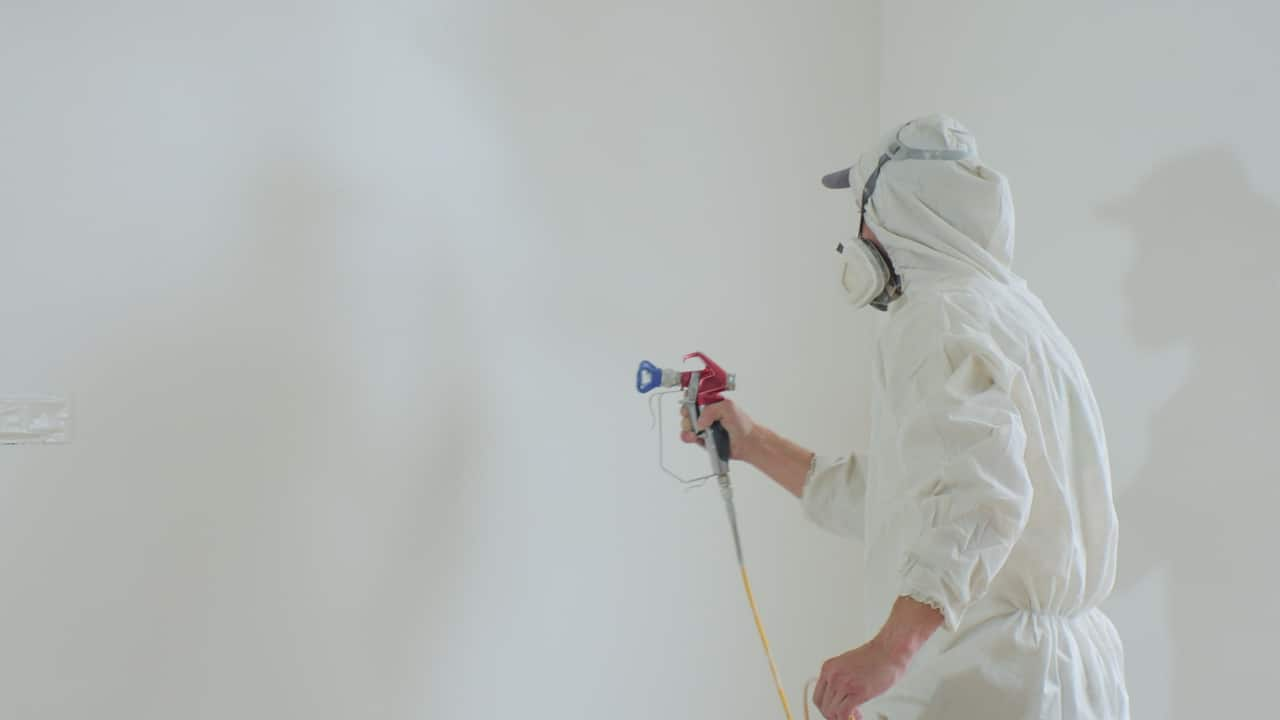Spray painting is an art form in itself, offering a plethora of techniques that cater to diverse needs and creative aspirations.
From achieving flawless finishes on automotive surfaces to crafting intricate murals, understanding the nuances of various spray painting methods can elevate your skills and expand your artistic horizons.
In this comprehensive guide, we’ll delve deeper into the world of spray painting, exploring the intricacies of different techniques and their applications across industries and artistic endeavours.
6 Types of Spray Painting Techniques
1. Airless Spray Painting:
Airless spray painting is a powerhouse technique widely used in industries like construction, automotive, and furniture manufacturing. It utilizes high-pressure equipment to atomize paint into fine droplets, which are then propelled onto the surface being painted. The absence of air in the process allows for quick and uniform coverage over large areas, making it ideal for projects that demand efficiency without compromising on quality.
2. HVLP (High Volume Low Pressure) Spray Painting:

HVLP spray painting systems are renowned for their precision and control, making them a favorite among professionals and hobbyists alike. By using a high volume of air at low pressure, HVLP guns atomize paint into a fine mist, resulting in reduced overspray and improved transfer efficiency. This technique is perfect for detailed work, such as automotive painting, woodworking, and fine art, where accuracy and finesse are paramount.
3. Airbrush Painting:
Airbrush painting is synonymous with intricate designs and artistic flair. Utilizing a handheld airbrush gun, artists can achieve precise control over paint application, allowing for detailed strokes and seamless blending of colors. This technique is popular in the realm of custom artwork, murals, and illustrations, where artists harness its versatility to create breathtaking compositions and express their creativity on various surfaces.
4. Electrostatic Spray Painting:
Electrostatic spray painting revolutionizes the painting process by harnessing the power of static electricity to achieve superior coating results. By charging paint particles and the surface being painted, electrostatic guns ensure that paint adheres uniformly, minimizing overspray and waste. This technique finds applications in automotive manufacturing, metal finishing, and appliance production, where consistency and finish quality are paramount.
5. Graffiti and Street Art Techniques:
Graffiti and street artists push the boundaries of spray painting, employing a myriad of techniques to create visually stunning murals and urban artworks. From stenciling and layering to blending colors and creating intricate patterns, these artists use spray paint as their medium of choice to make bold statements and ignite conversations in public spaces.
6. Textured Spray Painting:
Textured spray painting adds dimension and tactile appeal to surfaces, transforming them into works of art in their own right. By incorporating additives or specialized spray equipment, painters can create a variety of textures, from gritty and rough to smooth and velvety. This technique is popular for decorative finishes on walls, furniture, and other surfaces, allowing for endless creativity and customization.
7. Virtual Reality Spray Painting
Virtual Reality (VR) Spray Painting Simulator is an innovative technique that uses advanced VR simulators to teach and practice spray painting skills in a risk-free environment. This method allows users to perfect their hand movements, control spray angles, and adjust paint flow without wasting materials or harming the environment.
Benefits:
- Cost-Efficient: Reduces paint waste and eliminates the need for physical setups.
- Eco-Friendly: No emissions or chemical exposure.
- Real-Time Feedback: Improves precision with instant insights on technique.
This cutting-edge method is ideal for beginners and professionals looking to refine their spray painting skills for industries like automotive, construction, and aerospace.
FAQ’s
How do I set up a spray gun for the best results?
Ensure the air pressure, nozzle size, and paint flow settings match the project requirements. Adjust the fan pattern and test the spray on a scrap surface before starting.
How can I avoid overspray when using a spray gun?
Use proper masking techniques and maintain the correct spray distance (6-12 inches). Keep the gun perpendicular to the surface and overlap each pass slightly for even coverage.
What is the proper technique for using a spray gun?
Move the gun in smooth, consistent strokes, keeping it at a steady distance and angle from the surface. Avoid tilting the gun or pausing in one spot to prevent drips or uneven paint.
How do I clean and maintain my spray gun?
Disassemble the gun and clean all parts with the appropriate solvent after each use. Ensure no paint residue remains in the nozzle or internal parts to maintain optimal performance.
What types of paints can be used with a spray gun?
Spray guns can be used with various types of paints, including acrylic, enamel, lacquer, and polyurethane. Always ensure the paint is properly thinned as per the spray gun manufacturer’s recommendations for optimal performance.
Conclusion:
The world of spray painting is as vast and diverse as the imagination itself, offering endless possibilities for creativity and self-expression.
Whether you’re a seasoned professional or an aspiring artist, mastering different spray painting techniques opens up a world of opportunities to bring your vision to life. By understanding the nuances of each technique and honing your skills through practice and experimentation, you can unlock your full artistic potential and leave a lasting impression with every stroke of the spray gun.




